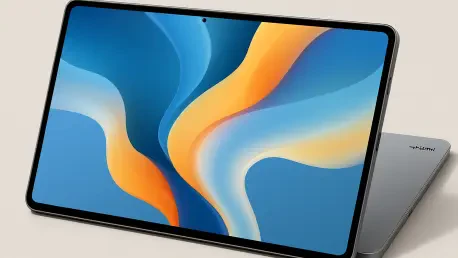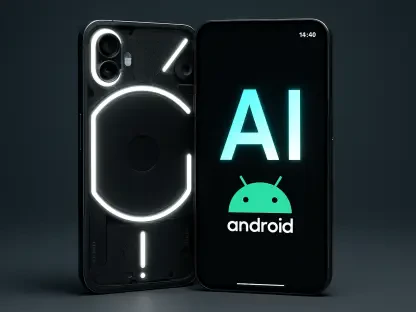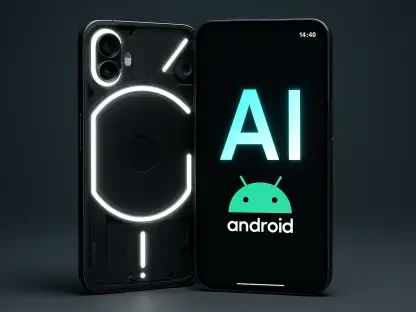I’m thrilled to sit down with Oscar Vail, a renowned technology expert with a deep passion for cutting-edge innovations in quantum computing, robotics, and open-source projects. With his finger always on the pulse of the tech industry, Oscar is the perfect person to dive into the details of the newly unveiled Xiaomi Pad 8 and Pad 8 Pro. In our conversation, we explore what sets these tablets apart, from their stunning displays and powerful performance to their sleek design and unique features like the Matte edition. Let’s get started!
What can you tell us about the Xiaomi Pad 8 and Pad 8 Pro that makes them unique in the crowded tablet market?
The Xiaomi Pad 8 and Pad 8 Pro really carve out a niche for themselves with a blend of high-end specs and thoughtful design choices. Both tablets boast an 11.2-inch LCD with a crisp 3.2K resolution and a buttery-smooth 144Hz refresh rate, which is rare at their price point. They also share features like quad speakers with Dolby Atmos and a massive 9,200mAh battery. What sets them apart further is the option for a Matte edition with an anti-glare coating, which is a game-changer for outdoor use or bright environments. Add to that the powerful Snapdragon chips—8s Gen 4 in the Pad 8 and 8 Elite in the Pro—and you’ve got devices that punch above their weight in performance and value.
How does the 144Hz refresh rate on the 11.2-inch display elevate the experience for users, especially for activities like gaming or streaming?
The 144Hz refresh rate is a standout feature. It means the screen updates 144 times per second, making everything from scrolling through apps to playing fast-paced games incredibly fluid. For gamers, this translates to reduced motion blur and quicker response times, which can be a competitive edge. When streaming high-definition content, the smoothness enhances the visual quality, making animations and transitions look seamless. It’s particularly noticeable on a display this sharp with 3.2K resolution, creating an immersive experience that’s hard to beat.
With support for HDR10, HDR Vivid, and Dolby Vision, how do these display technologies transform the way users enjoy content on these tablets?
These technologies elevate the visual experience by enhancing color, contrast, and brightness. HDR10 and HDR Vivid ensure that colors are more vibrant and true-to-life, while also improving the dynamic range—so you see deeper blacks and brighter whites. Dolby Vision takes it a step further by optimizing the picture scene-by-scene, which means movies and shows look exactly as the creators intended. Whether you’re watching a blockbuster or editing photos, these features make details pop, offering a cinematic feel right in your hands.
Can you explain who might benefit most from the Matte edition’s AG texture coating, and how it tackles issues with reflections?
The Matte edition, with its AG texture coating, is a brilliant addition for anyone who uses their tablet in varied lighting conditions—think students, professionals, or artists working outdoors or in brightly lit offices. This coating cuts down reflections by up to 70%, so glare from sunlight or overhead lights won’t strain your eyes or obscure the screen. It’s especially handy for reading, sketching, or long work sessions, as it reduces eye fatigue and keeps the display clear no matter where you are.
How does the quad speaker setup with Dolby Atmos on these tablets stack up against competitors in the same price range?
The quad speakers with Dolby Atmos on the Pad 8 and Pad 8 Pro are a cut above most tablets in this price bracket. Dolby Atmos creates a surround sound effect, making audio feel like it’s coming from all directions, which is fantastic for movies or immersive games. Compared to competitors, where audio often feels flat or tinny, Xiaomi’s setup delivers richer, more balanced sound with decent bass. It’s not quite laptop or premium speaker level, but for a tablet, it’s impressive and adds a lot to the multimedia experience.
The design of these tablets is striking, with a slim 5.75mm profile and a light 485-gram weight. How did Xiaomi manage to keep them durable despite being so thin?
Xiaomi has done a commendable job balancing aesthetics with durability here. At 5.75mm thick and just 485 grams, these tablets are incredibly portable, yet they don’t skimp on build quality. They likely used high-strength aluminum or alloy materials for the chassis to maintain structural integrity without adding bulk. Precision engineering also plays a role—components are packed tightly with optimized layouts to avoid weak points. While they’re not marketed as rugged, the design suggests they can handle daily wear and tear, though I’d still recommend a case for extra protection.
Let’s talk battery life. With a 9,200mAh capacity, how does the charging speed difference—45W on the Pad 8 versus 67W on the Pro—impact real-world usage?
The 9,200mAh battery on both tablets is substantial, easily lasting a full day of heavy use—think streaming, browsing, and productivity tasks. The charging speed difference is where it gets interesting. The Pad 8’s 45W charging can take it from 0 to 100% in roughly an hour and a half, which is solid. The Pro’s 67W, however, cuts that down to closer to an hour, which is a noticeable edge if you’re always on the go. In real-world terms, both offer great endurance, but the Pro caters to users who need a quick top-up between tasks.
Can you break down the performance gap between the Snapdragon 8s Gen 4 in the Pad 8 and the Snapdragon 8 Elite in the Pro for different types of users?
The Snapdragon 8s Gen 4 in the Pad 8 is a high-performing chip, great for everyday tasks like web browsing, streaming, and light gaming. It handles multitasking with up to 12GB of RAM without breaking a sweat. The Snapdragon 8 Elite in the Pro, though, is a flagship-tier processor, offering top-notch performance for demanding apps. Gamers and creators doing heavy video editing or 3D rendering will notice faster load times and smoother operation, especially with up to 16GB of RAM. So, the Pad 8 is ideal for casual to moderate users, while the Pro targets power users who push their devices to the limit.
With the Pad 8 Pro offering up to 16GB of RAM and 512GB of storage, who do you think this tablet is really designed for?
The Pad 8 Pro with those specs is clearly aimed at power users and professionals who treat their tablet as a laptop replacement. Think content creators, graphic designers, or video editors who need to run resource-intensive apps like Adobe Premiere or Procreate while juggling multiple tasks. The 16GB of RAM ensures seamless multitasking, and 512GB of storage means you can keep large files, projects, and media right on the device. It’s also perfect for tech enthusiasts who want a future-proof gadget that can handle anything thrown at it.
The camera setups differ significantly, with the Pro boasting a 50MP rear and 32MP front compared to the Pad 8’s 13MP and 8MP. How much does this upgrade matter for tablet users?
For most tablet users, cameras aren’t the primary focus, but the upgrade on the Pro is meaningful for specific use cases. The Pad 8’s 13MP rear and 8MP front are fine for casual video calls or scanning documents. The Pro’s 50MP rear, however, is a huge leap for capturing high-quality photos or videos—great for creators documenting their work or shooting content on the go. The 32MP front camera also shines in video conferencing, offering sharper, more detailed visuals. So, while the average user might not notice, professionals and content creators will definitely appreciate the Pro’s setup.
What’s your forecast for the future of tablets like the Xiaomi Pad 8 series in terms of their role in tech and consumer trends?
I think tablets like the Xiaomi Pad 8 and Pad 8 Pro are poised to become even more central to our tech lives as hybrid devices. With specs rivaling laptops and prices that are still accessible, they’re bridging the gap between smartphones and full-fledged computers. We’re likely to see more focus on productivity features—think better stylus support and desktop-like software—as well as deeper integration with ecosystems for seamless device switching. Xiaomi’s push with high refresh rates and powerful chips also hints at tablets becoming go-to devices for gaming and entertainment. I expect consumer demand to grow for versatile, all-in-one gadgets like these, especially as remote work and digital creation continue to shape how we use tech.









